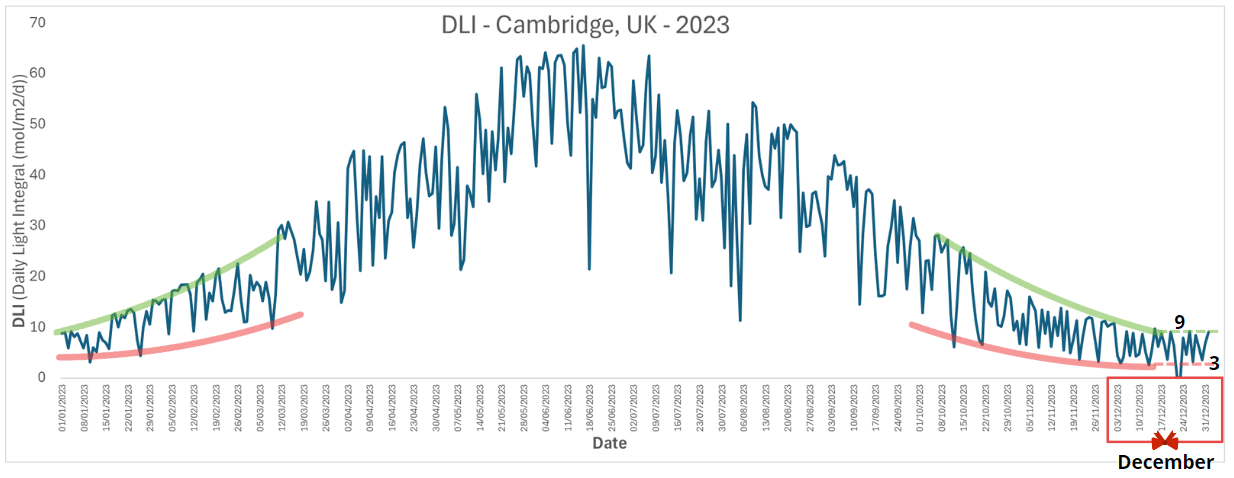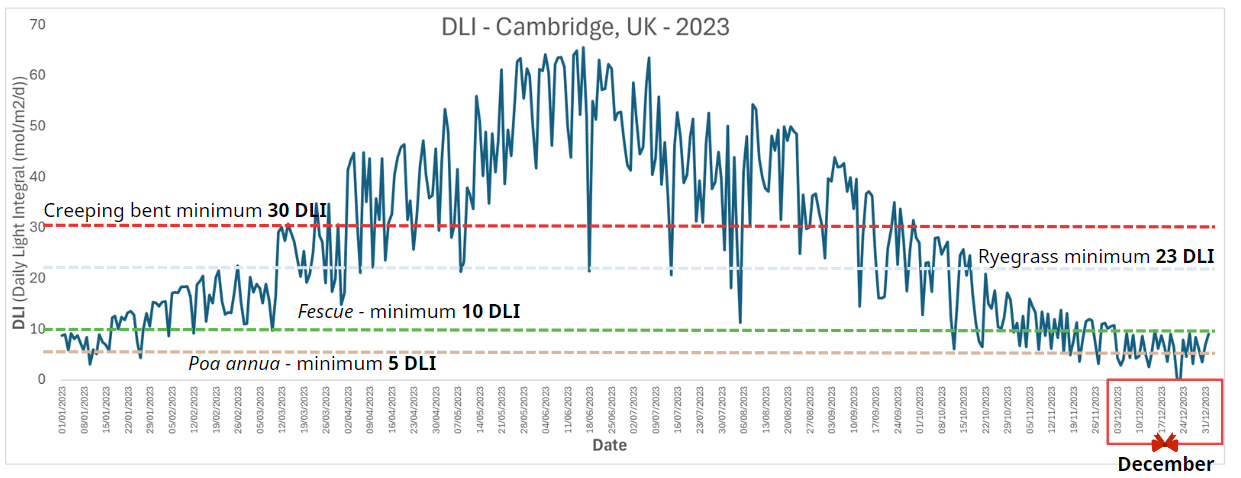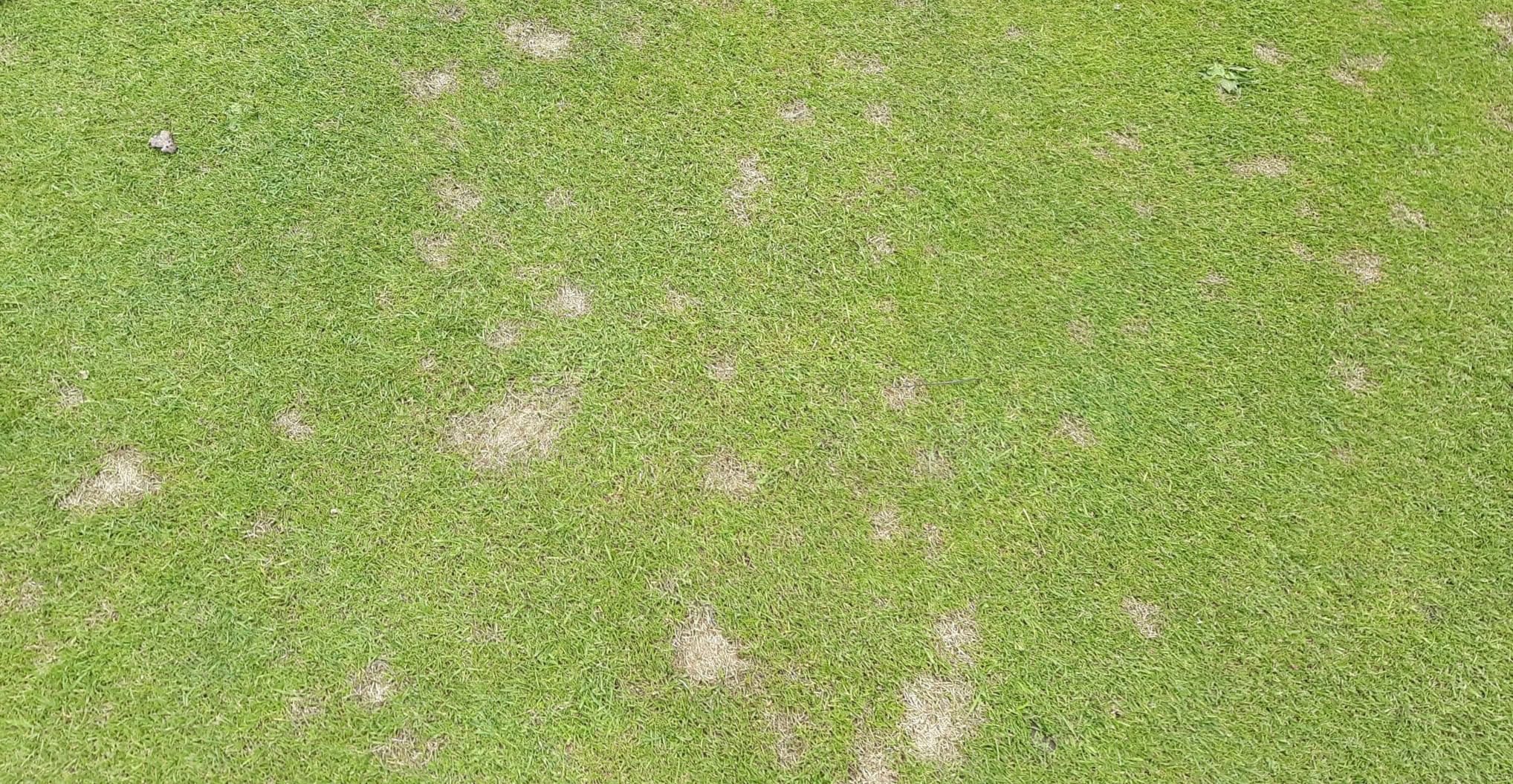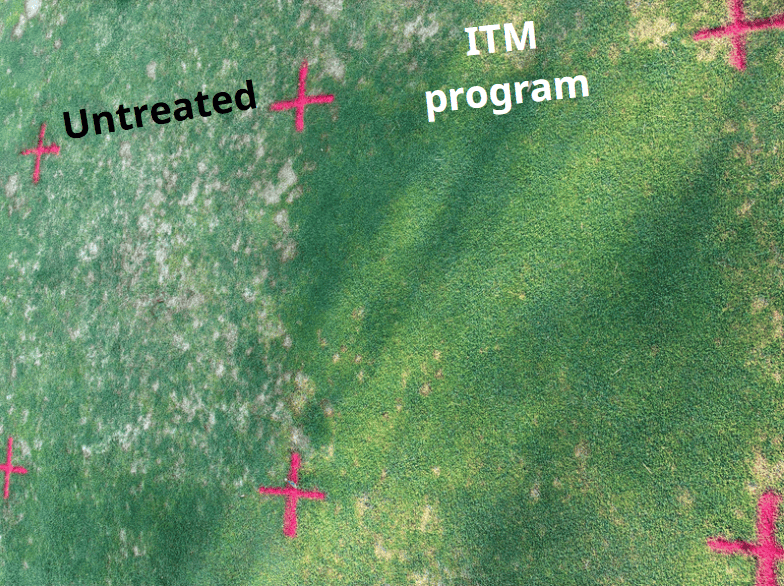Many of us will be celebrating Christmas with friends and loved ones over the next few days.
It’s a special time of year and people in the northern hemisphere have been feasting and celebrating around the winter solstice long before Christmas was a tradition, the Romans called the feasting Saturnalia and Stonehenge was built around 5,000 years ago to align with the sun on the solstices.
You can watch a live stream of the sunrise at Stonehenge the morning of 21st December, if that’s your thing…
SO short days have been important for a long time and that rings true for turf managers today.
I promised another blog on DLI (Daily Light Integral) so here we go, catch up on the previous blog here.
What is Daily Light Integral?
DLI measures the total amount of photosynthetically active radiation (light) received by turf each day.
Think of it as similar to tracking rainfall, but for light. This measurement provides a comprehensive view of the light exposure grass receives, which is crucial for its growth and health.
Having checked the DLI for where I live today and got 5.2 (get your own, tucked away on the weather page), it made me think what does DLI look like over the whole year?

When we look specifically at the end of December we can see the dashed green and red lines trend, the maximum DLI is around 9, and the trend in the minimum is about 3 (for Cambridge 2023).
Those “9” days would be made up of full sun all day.
The “3” days would be a good portion of cloud cover, but not total, as we see that one day, 23rd December 2023 dipped to “0 DLI” so full cloud all day.
I’ve added the solid green and red curves to show: if Green: you were at a very cloud/rain free site where you would trend, the higher part of the curve.
The Red curves show the less optimistic trend, the days where cloud cover and haze are reducing the amount of light which reaches the turf over a day.

Now we have the years DLI graph we can think about when different turf species will be happy/competitive.
But we must bear in mind this is just 2023, every year will look different.
More research is required in this area, but I see DLI becoming an important metric for helping turf managers evaluate and understand what’s going on.
Whether the DLI values offered below from the research for the different turf species are perfect yet for the UK is not clear.
We can expect different cultivars within each group to have different needs and tolerances.
But what we do see very clearly is the need, in December – February especially, to protect the sward we have available.
As from the available light stand point it’s going to be a hard to grow to recover for most of the finer turf species we might want to encourage.
Tolerance to wear and disease are at their lowest of the year.

Consider that the rough DLI values presented for each grass are based on greens height of cut.
At higher heights of cut each grass species will be able to handle lower DLI levels as there is more leaf area to harvest the available light.
Enjoy the winter solstice, you can either think:
A) It’s the Christmas holidays!
B) It’s the shortest day on the 21st December, so we are on the warm back up to summer Solstice in June!
Hoping to see lots of you for the 5K early bird run at BTME in January (dust off those running/jogging/shuffling shoes).
Have a great break for the holidays, try and get some sun if you can, like turf we need to take what we can get at this time of year!
Merry Christmas and a happy new year from the team at Syngenta.
Looking forward to more to come on the blog in 2025!




